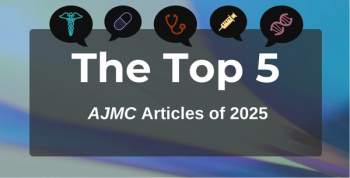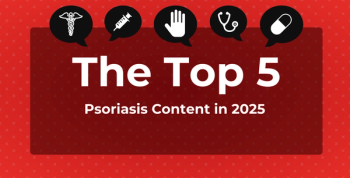
Low COPD Diagnosis Rate Among Japanese Patients Indicates Underdiagnosis
There is an extremely low rate of chronic obstructive pulmonary disease (COPD) diagnoses in Japan, particularly among patients with airflow obstruction, despite regular respiratory function tests.
There is an alarmingly low rate of
The researchers explained that COPD is characterized by airflow obstruction, indicated by respiratory function tests. The Nippon COPD Epidemiology (NICE)
Because the NICE study was conducted in 2000, COPD-related circumstances may have evolved over 2 decades, namely smoking pattern alterations, population aging, and changes in COPD prevalence.1 Consequently, the researchers aimed to reassess the prevalence of airflow obstruction and the COPD diagnosis rate in Japan.
The primary end point was airflow obstruction prevalence, which they defined as a forced expiratory volume in the first second (FEV1)/forced vital capacity (FVC) ratio (FEV1/FVC) less than 70%. The secondary end point was the COPD diagnosis rate in the airflow obstruction group; they diagnosed COPD using the International Classification of Diseases 10th Revision (ICD-10) codes J41 through J44.
The researchers used the JMDC database to analyze health insurance claims and health checkup data recorded between January and December 2019 by health insurance unions; health insurance unions are accessible to Japanese patients younger than 75 years employed in workplaces eligible for health insurance. More specifically, the researchers examined a subgroup of those aged 40 years or older who underwent a health checkup in 2019 and had available respiratory function test data.
The study population consisted of 102,190 patients, 4113 (4.0%) of whom had airflow obstruction; airflow obstruction was prevalent among 5.3% of men and 2.1% of women. In terms of smoking status, airflow obstruction was prevalent in 6.8% of smokers and 3.4% of never or former smokers. Also, airflow obstruction increased with age as it was prevalent in 2.1%, 4.3%, 8.3%, and 14.4% of those aged between 40 to 49 years, 50 to 59 years, 60 to 69 years, and 70 to 74 years, respectively.
Additionally, of the 4113 patients with airflow obstruction, 346 (8.4%) were diagnosed with COPD. The researchers determined the disease stage of those with COPD based on the Global Initiative for Chronic Obstructive Lung Disease (GOLD) criteria. Therefore, patients considered GOLD 1 had an FEV1 of 80% or greater, patients considered GOLD 2 had an FEV1 between 50% to 79%, patients considered GOLD 3 had an FEV1 between 30% and 59%, and patients considered GOLD 4 had an FEV1 of less than 30%.
They found that 6.2% of COPD diagnoses occurred at the GOLD 1 stage, 9.6% occurred at GOLD 2, and 21.8% occurred at GOLD 3 and GOLD 4. Consequently, most of the patients with airflow obstruction who were diagnosed with COPD were at a more advanced stage.
Based on the respiratory function tests, the researchers determined that the mean (standard deviation [SD]) FEV1/FVC values for patients without and with a COPD diagnosis were 65.34% (4.90%) and 62.37% (7.38%), respectively. Lastly, the mean (SD) FEV1 values of those without and with a COPD diagnosis were 2.48 (0.63) liters (L) and 2.23 (0.59) L, respectively. Therefore, both the FEV1/FVC and FEV1 values were significantly lower in patients with COPD (P < .0001)
The researchers acknowledged several study limitations, one being that there was no available data for patients aged 75 years or older since they are ineligible for health insurance unions. Therefore, these findings may not represent the older Japanese population. Also, the study population only included those who underwent respiratory function tests during routine health checkups. Consequently, it may overrepresent insured individuals with access to a broader range of health evaluations and undergo more regular assessments. Despite these limitations, the researchers used their findings to suggest how to increase COPD diagnosis efforts.
“This highlights the critical need for increased awareness campaigns surrounding this condition," the authors concluded. "Moreover, this study emphasizes the pivotal role of primary care physicians and their collaboration with pulmonologists in promoting the early detection of suspected cases and increasing the diagnosis rate of COPD.”
References
1. Koga Y, Deguchi S, Matsuo T, Suzuki A, Terashima G, Tajima T, Shibata Y, Sagara H. Underdiagnosis of COPD: The Japan COPD Real-World Data Epidemiological (CORE) Study. Int J Chron Obstruct Pulmon Dis. 2024;19:1011-1019doi:10.2147/COPD.S450270
2. Fukuchi Y, Nishimura M, Ichinose M, et al. COPD in Japan: the Nippon COPD epidemiology study. Respirology. 2004;9(4):458–465. doi:10.1111/j.1440-1843.2004.00637.x
Newsletter
Stay ahead of policy, cost, and value—subscribe to AJMC for expert insights at the intersection of clinical care and health economics.








































